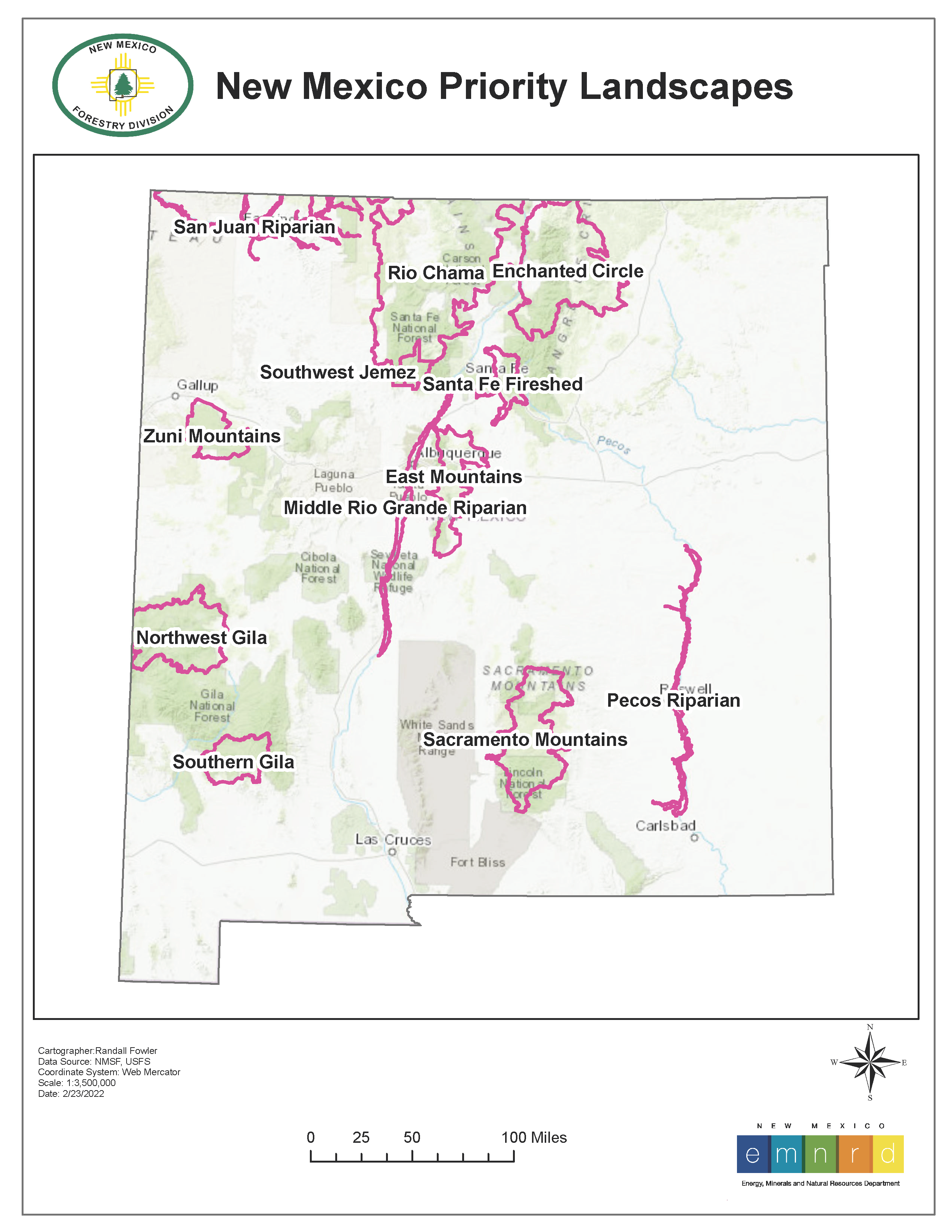Forest Action Plan
Forest Action Plan
EXECUTIVE SUMMARY
The EMNRD Forestry Division worked with many partners to create the 2020 New Mexico Forest Action Plan. The plan provides an assessment of the current conditions of our natural resources and sets forth strategies that address key issues in forest and watershed management in a changing climate.
States are required by the USDA Forest Service (as authorized by the federal Farm Bill) to develop a Forest Action Plan on a recurring 10-year plan cycle. This 2020 plan builds upon the first plan developed in 2010. Two notable differences between the 2010 and 2020 plan are that this plan provides:
-
- A vision and next steps for collaboration between agencies and organizations and is not just intended to guide the actions of the Forestry Division alone; and
- Strategies and priorities to implement the Agreement for Shared Stewardship signed by New Mexico Governor Michelle Lujan Grisham and USDA Forest Service Chief Vicki Christiansen on November 14, 2019.
The Agreement for Shared Stewardship strengthens an already solid partnership between the State of New Mexico and USDA Forest Service and establishes the Forest Action Plan as the primary tool to establish a framework to coordinate forest and watershed management in the state.
This plan further supports Governor Michelle Lujan Grisham’s Executive Order 2019-003 Addressing Climate Change and Energy Waste Prevention. The Forestry Division is charged with integrating climate mitigation and adaptation practices related to natural and working lands into state agency operations and promoting forest and watershed management that will help ensure the long-term sustainability and resilience of New Mexico’s natural and working lands and reduce the vulnerability of natural resources and communities to climate risks.
The Assessment (Chapter 2) section of the Forest Action Plan provides a geospatial analysis of the conditions and trends of forests and other natural resources in New Mexico as well as threats to forested lands, natural and cultural resources, life, and property. The Assessment used over 200 layers of data collected from dozens of sources to look at eight themes, each with a stakeholder group that guided the use of the data. These themes were paired with eight key threats to help identify vulnerabilities. The analysis and some original data sets are included in an online Data Atlas, providing easier public access to the Assessment information than was previously possible.
The ultimate purpose of the Assessment is to gather and consider the best science available for developing Strategies (Chapter 3) and other decision making. The Assessment identifies high risk areas where hazards pose the greatest threat to resources, and priority areas where strategies can be implemented to protect and enhance public benefit from natural resources.
The ten strategies set forth in this 2020 plan are:
-
- Restore Forests and Watersheds
- Fire Management
- Private Land Stewardship
- Utility Rights of Way
- Rare Plants
- Reforestation
- Urban Forests and Communities
- Restoration Economy
- Land Conservation
- Outdoor Recreation
In addition to the ten strategies, the plan also identifies priority landscapes for the application of the strategies. The effort generated a set of priority landscape maps that include:
-
- Priority Landscapes (Chapter 4) for restoration across all jurisdictions with forest and woodland cover types and identifies the top 500 watersheds in the state ranked by wildfire risk and importance for water source protection and biodiversity. These priority landscapes account for approximately 20% of all watersheds at risk.
- Shared Stewardship for high priority landscapes on National Forest System lands and adjacent lands and identifies the top 250 watersheds in the state ranked by wildfire risk and importance for water source protection and biodiversity.
The Assessment, Strategy, and Priority Landscapes chapters provide information to guide all forest and watershed managers in the state to invest and leverage resources where they will garner the greatest benefit. This plan will guide partners in planning, funding, and conducting restoration activities across jurisdictions over the next 10 years.
ACKNOWLEDGEMENTS
The Forestry Division acknowledges the vast gifts of expertise, opinion, and assistance from over a hundred individuals statewide via the Forest and Watershed Coordinating Group. The breadth and depth of this plan is attributable to the diverse participation from many stakeholders.

